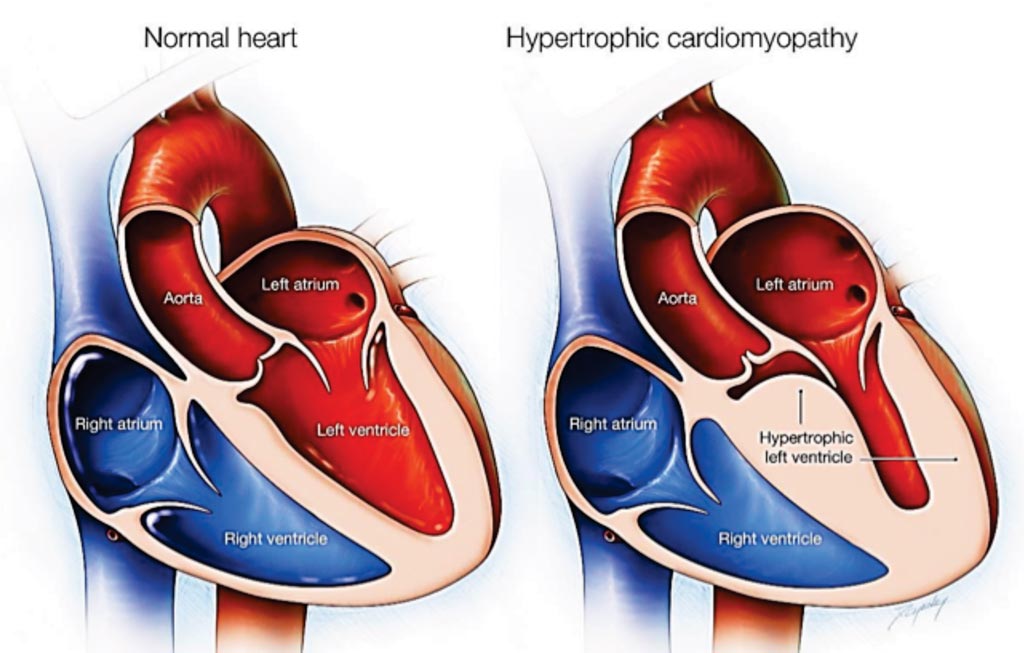Genetic Variant Identified As Better Marker for CV Disease
By LabMedica International staff writers
Posted on 24 Apr 2018
A newly identified subset of a known genetic variant found primarily in individuals of South Asian descent may be a better marker for carriers of heart dysfunction in this population and that individuals with this genetic variant are more likely to develop early signs of hypertrophic cardiomyopathy.Posted on 24 Apr 2018
Hypertrophic cardiomyopathy occurs when heart muscle cells enlarge and cause the walls of the ventricles to thicken. The ventricle size often remains normal, but the thickening may block blood flow out of the ventricle and cause the heart to work harder. Hypertrophic cardiomyopathy, also commonly referred to as enlarged heart, can lead to sudden cardiac arrest.

Image: A diagram of a normal heart compared to hypertrophic cardiomyopathy (Photo courtesy of the Mayo Clinic).
An international team of scientists collaborating with the University of Cincinnati (Cincinnati, OH, USA) screened 2,401 South Asians living in the USA for the genetic variant of myosin-binding protein C, cardiac-type (MYBPC3Δ25bp). In this genotype-phenotype study, individuals of South Asian descent living in the USA from both sexes (36.23% female) with a mean population age of 48.92 years (range, 18-84 years) were recruited. Next-generation sequencing of 174 cardiovascular disease genes was applied to identify additional modifying gene mutations and correlate genotype-phenotype parameters. Cardiomyocytes derived from human-induced pluripotent stem cells were established and examined to assess the role of MYBPC3Δ25bp.
The investigators found that 6%, or 144 individuals, carried the genetic variant. Of that population, 9.6% or 13 individuals also carried the novel MYBPC3 variant D389V on the same single allele. Scientists think the prevalence of both the variant and subset occurring in the population of people of South Asian descent to be 1 in 200 individuals. A higher frequency of missense titin (TTN) variation was found in MYBPC3Δ25bp carriers compared with noncarriers, identifying distinct genetic backgrounds within the MYBPC3Δ25bp carrier group.
Shiv Kumar Viswanathan, PhD, PMP, the study’s lead author, said, “What we are seeing is the genetic variant is probably marking a population and within this group there can be a subpopulation that is even more at risk of cardiomyopathy. If we can predict in that population those who are at higher risk then we can hone in and focus on them and get them to a physician's care faster.” The study was published on April 11, 2018, in the journal JAMA Cardiology.
Related Links:
University of Cincinnati













